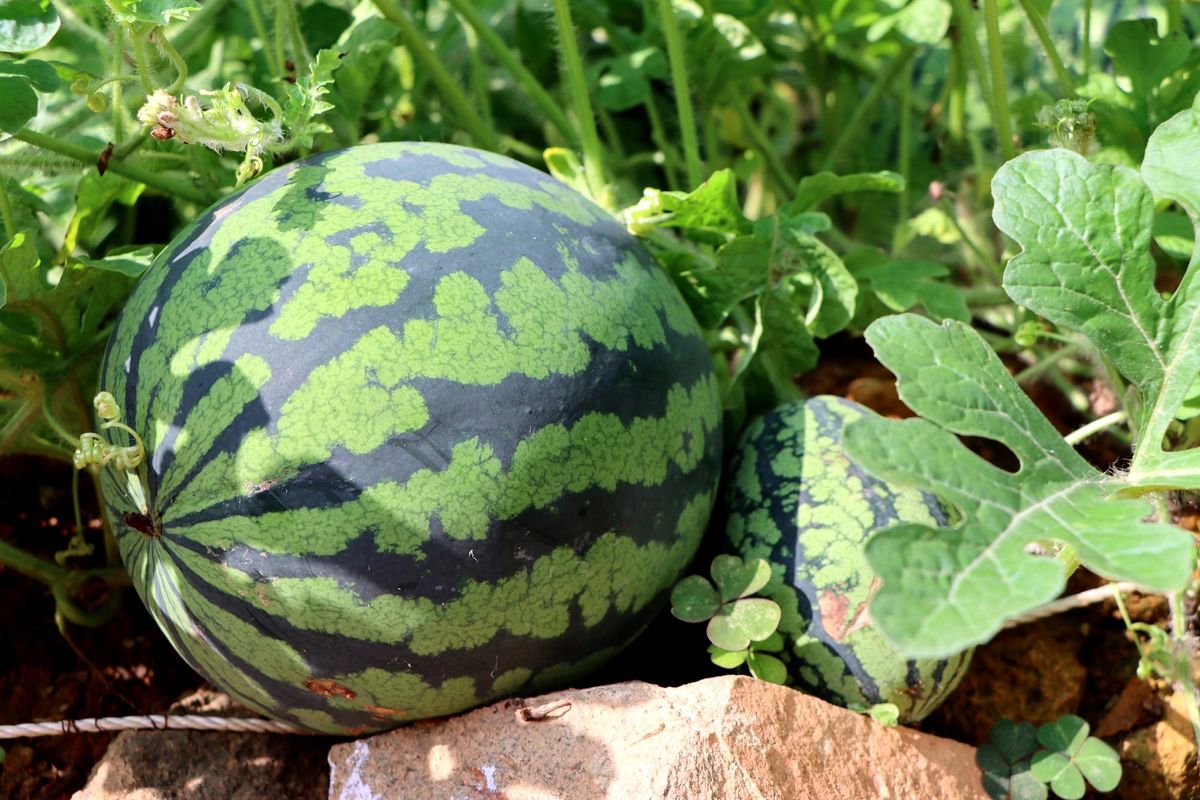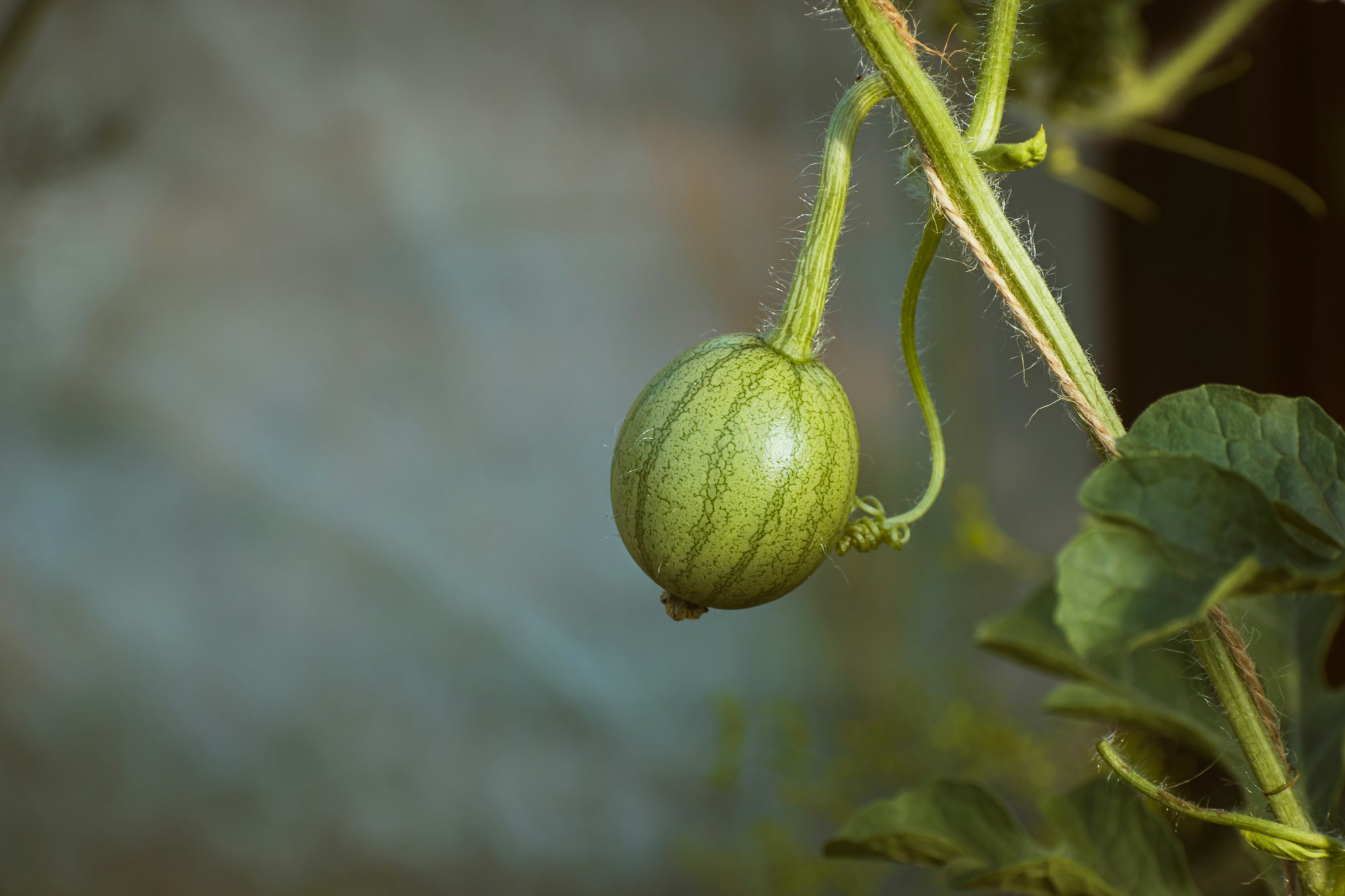How to Grow Watermelon
Growing watermelon can be a rewarding and delicious endeavor in your home garden. This juicy, sweet fruit is popular for its refreshing taste and relatively easy to grow, making it a favorite among gardeners.

Table of Contents
To begin cultivating your watermelon plants, it's essential to choose a suitable variety according to your climate and location.
With proper care, the right selection, and favorable conditions, you'll be able to enjoy the fruits of your labor!
About Watermelon Plant
Watermelons (Citrullus lanatus) are an annual fruiting vine that produces a delicious and iconic summertime treat.
They require a long, hot growing season and thrive in warm temperatures.
You'll need plenty of sun, nutrient-rich soil, and proper watering to grow watermelon successfully. These melons prefer well-drained, sandy soil with a pH between 6.0 and 6.5.
Growing Watermelon
Before planting watermelon seeds, ensure your area has well-drained, sandy soil with a pH between 6.0 and 6.5.
In cool climates with short growing seasons, begin by starting the seeds indoors 2 to 4 weeks before your last frost date.
Once the soil warms to 70 degrees Fahrenheit, you can transplant your seedlings or directly sow seeds in the garden.
Plant watermelon seeds 1/2 to 1 inch deep, placing two or three seeds in groups 18 to 24 inches apart. After the seedlings are established, remove two and leave the best watermelon plant in each group.
Remember that watermelons require ample space and sunlight to grow, so choose a location that provides these conditions.

Caring for Watermelon Plant
Sun and Temperature
Watermelon plants require 8 to 10 hours of sunlight daily for optimal flowering and fruit production. Ensure soil temperature remains within the range 70-95°F (21-35°C) for successful germination and growth.
Water and Humidity
Water the seeds thoroughly after planting, and maintain moist soil throughout germination and early growth.
Watermelon plants prefer a slightly humid environment but can tolerate various humidity levels.
Soil and Fertilizing
Plant watermelons in well-drained loamy or sandy loam soils with a pH between 6 and 6.8. Fertilize the plants with compost, manure, or a balanced fertilizer, and apply mulch to help retain moisture and regulate soil temperature.
Pruning and Propagation
Regularly prune off any unhealthy or damaged vines to encourage healthy growth.
If space is limited, train your watermelon plant to grow on a trellis or support to maximize the available area and promote proper ripening.
Troubleshooting Plant Problems
Growing Problems
Watermelon seedlings may struggle with germination, slow growth, or loss of plants due to improper planting conditions.
Plant watermelons in loose, organically-rich soil with plenty of compost and organic material to prevent these issues.
Ensure your plants receive 6-8 hours of direct sunlight daily, provide wind protection, and apply fertilizer monthly for optimal fruit development.
Keep an eye on the size of your watermelon, as they require a lot of space and resources.
Poor fruit shape or bitter taste could occur due to insufficient pollination or lack of nutrients.
To ensure proper pollination, grow watermelon flowers with male and female blossoms on the same vine. Regularly check soil pH and adjust if necessary, keeping it within the range of 6.0 to 6.8.
You may use black plastic to aid in ripening and maintaining soil temperature, which could further help with other issues like hollow heart, fruit rotting, and slow growth.
Pests and Diseases
Pests like aphids and diseases like powdery mildew can damage watermelon plants.
Invest in natural predators, such as ladybugs, to combat pests and practice crop rotation. Remove and destroy affected plant parts for diseases like powdery mildew and use organic fungicides.
Weeds can compete with your watermelon plants for nutrients and resources, making management essential.
To mitigate weed growth, consider using mulch or manually removing weeds regularly. Be cautious with chemical weed control, as it could harm your watermelon plants.
Paying attention to these tips will help you minimize potential issues and support the healthy growth of your watermelon plants.
Conclusion
Growing your watermelons can provide delicious, sweet fruits during the hot summer.
To ensure a successful harvest, choose well-drained soil, plant seeds or start after all danger of frost has passed, and provide plenty of water throughout the growing season.
When harvesting watermelon, look for signs of ripeness, such as the rind turning from glossy to a dull, matte appearance and a brown, dry tendril near the fruit's stem.
Once harvested, store watermelons in a cool room to maintain their delicious flavor.
Remember, different watermelon varieties - like Sugar Baby and watermelons with pink or red flesh - have specific requirements for optimal growth, so consider pollination needs and ensure good coverage by bees for healthy fruits.
Happy growing!
Frequently Asked Questions
What is the best soil preparation for growing watermelons?
Watermelons need well-drained, sandy soil with a pH of 6.0 and 6.5. Before planting, incorporate organic matter or compost to improve soil fertility.
How long does it take for watermelons to grow from seeds?
Watermelons usually take about 70 to 90 days to mature from seeds, depending on the variety. Remember that temperature, sunlight, and water availability can affect growth.
Do watermelons require full sun or partial shade?
Watermelons thrive in full sun, as they are a warm-weather crop. Ensuring they receive at least 6-8 hours of direct sunlight daily will help produce their sweet, juicy fruit.
What are suitable companion plants for watermelons?
Suitable watermelon companion plants include corn, beans, sunflowers, and nasturtiums. These plants help deter pests, improve soil fertility, and support the watermelon vines.
How many watermelons can one plant typically produce?
Depending on the cultivar and growing conditions, a single watermelon plant can produce two to four fruits on average. Adequate spacing and proper care are essential for the plant to reach its potential yield.


